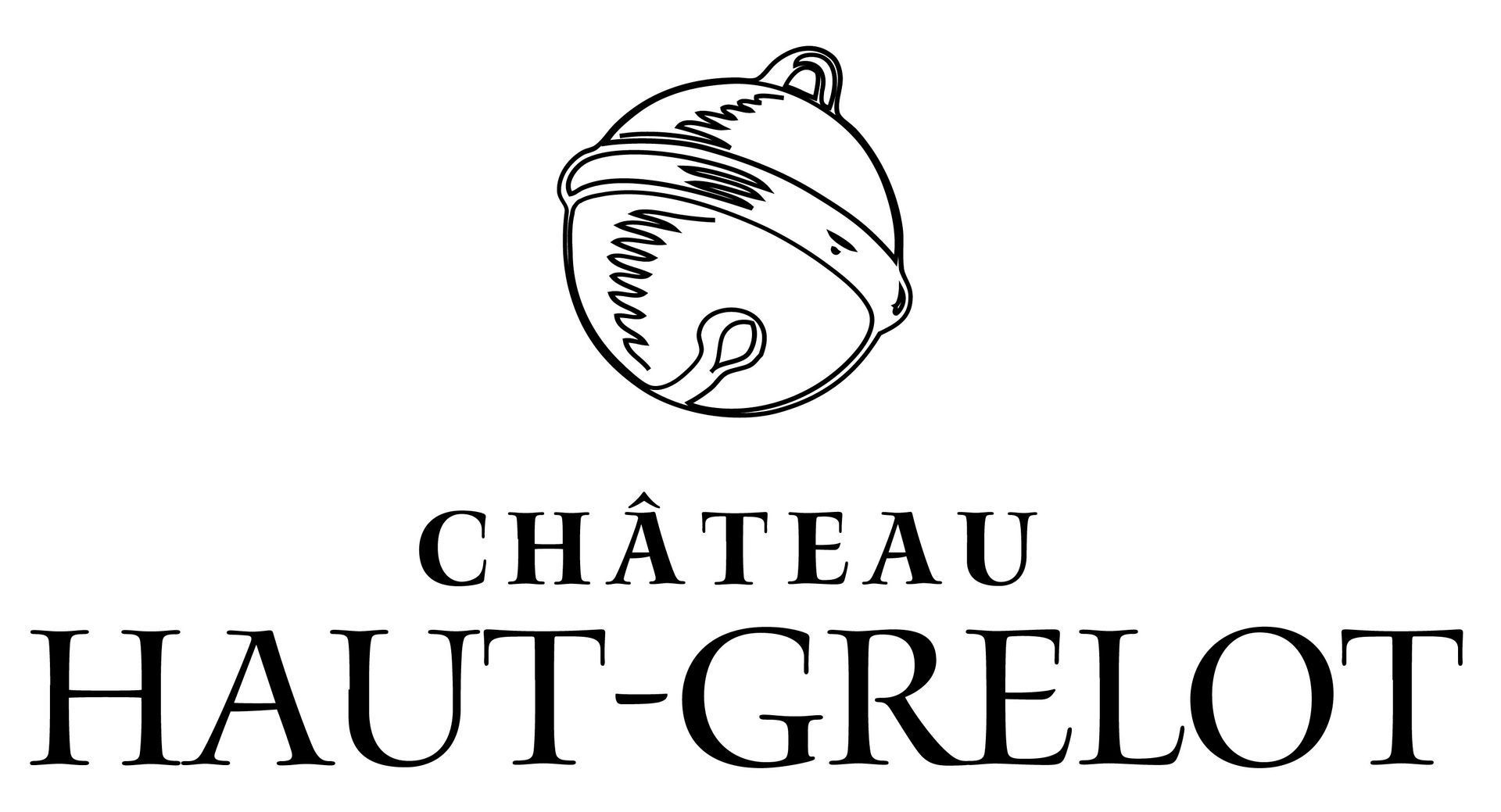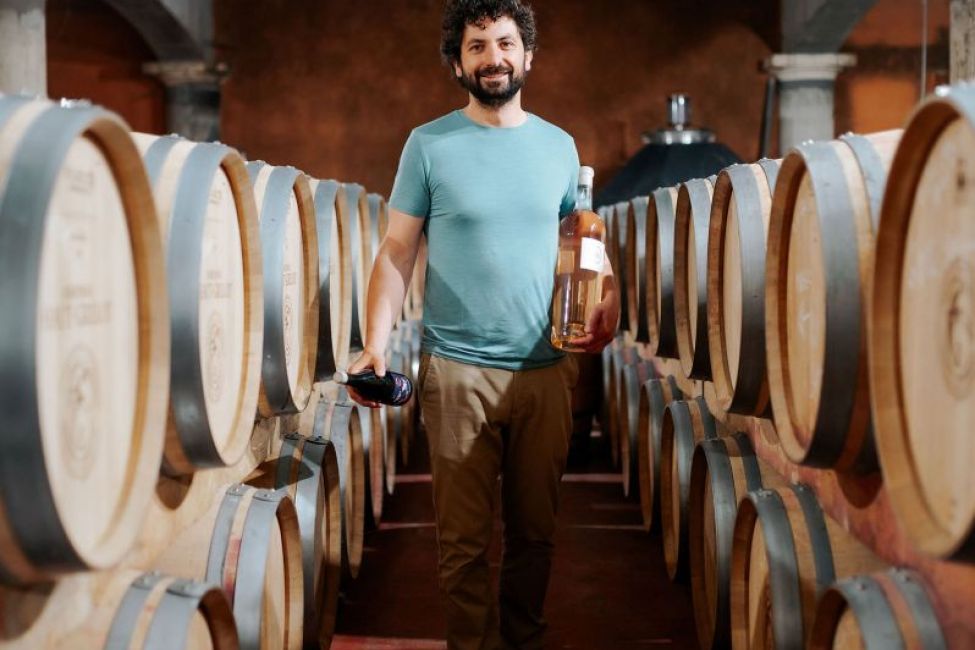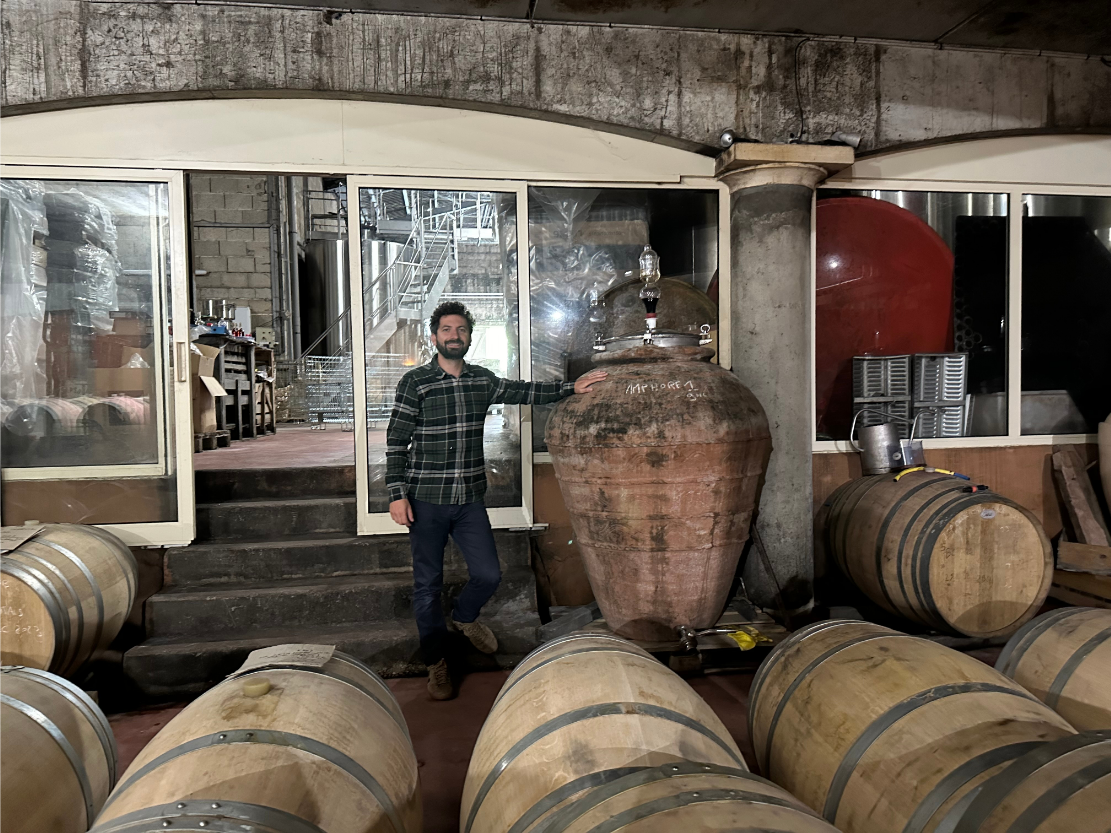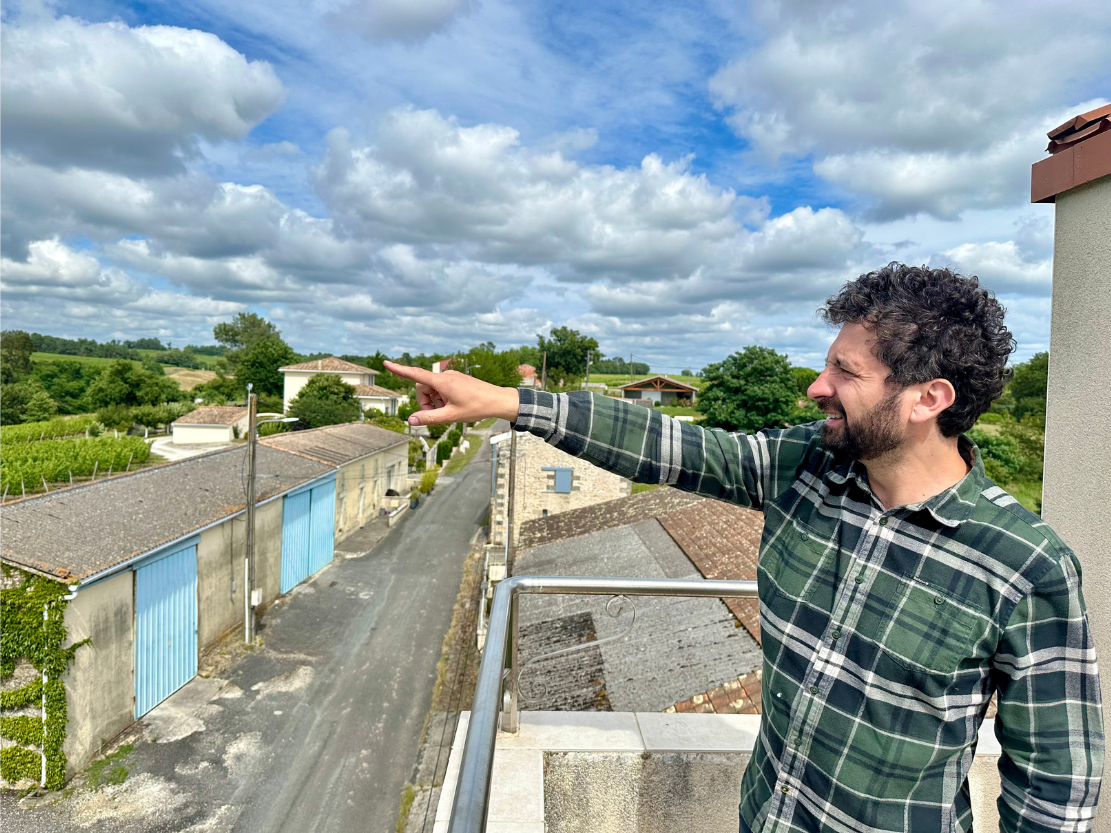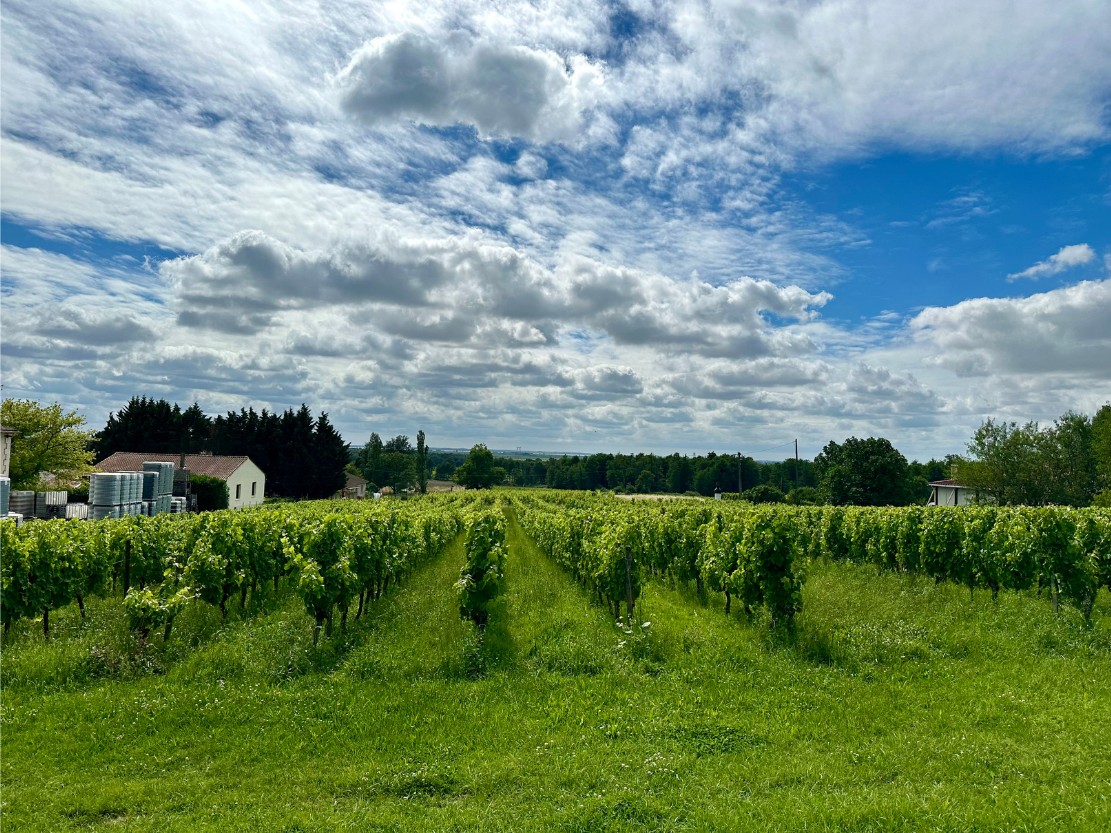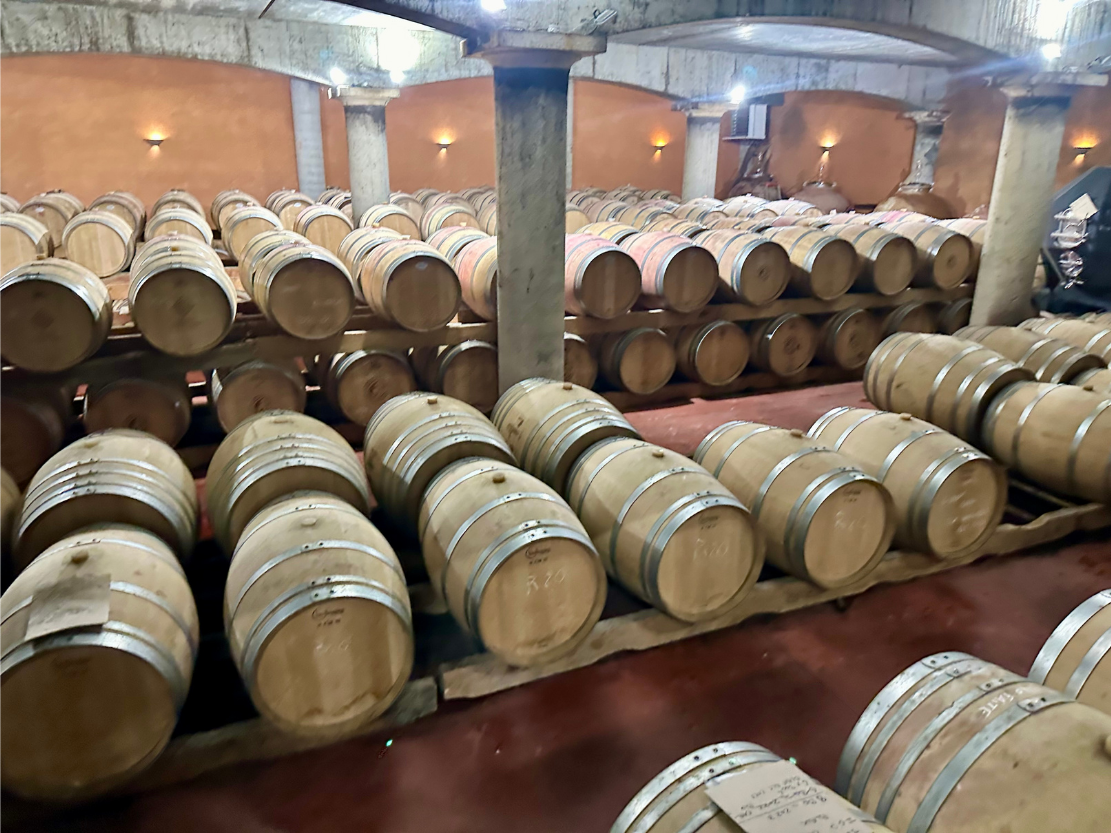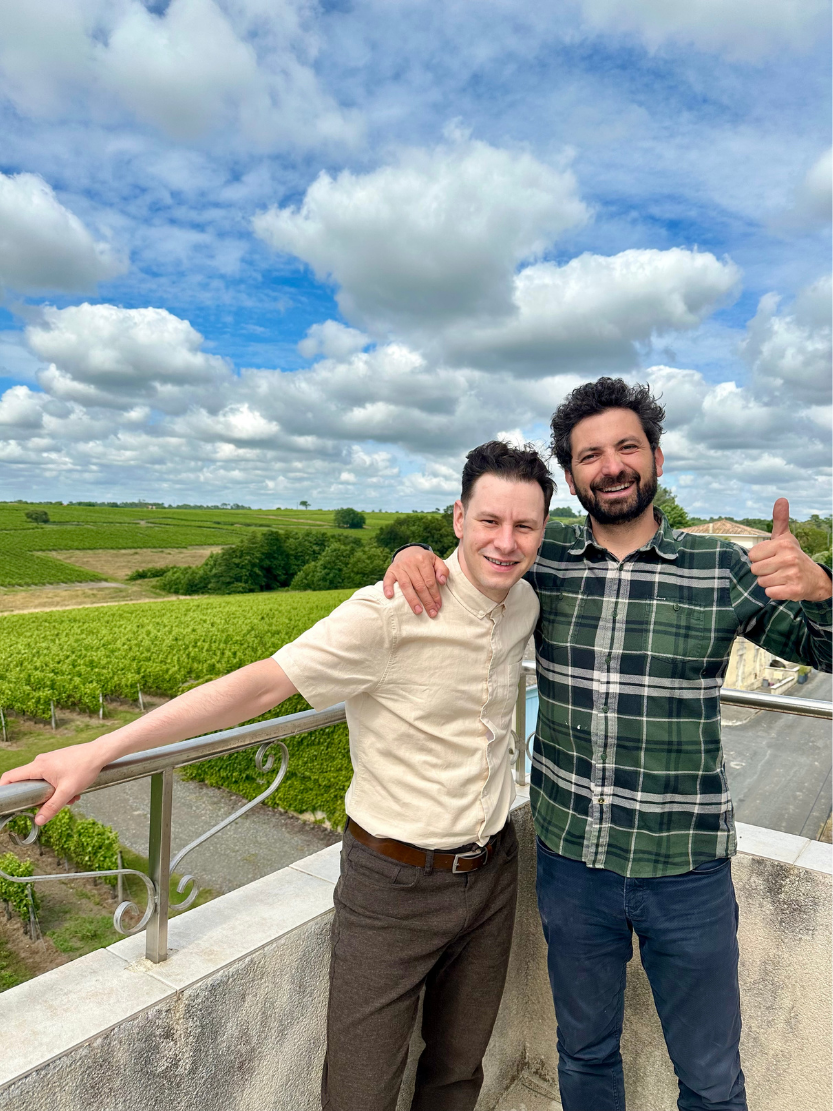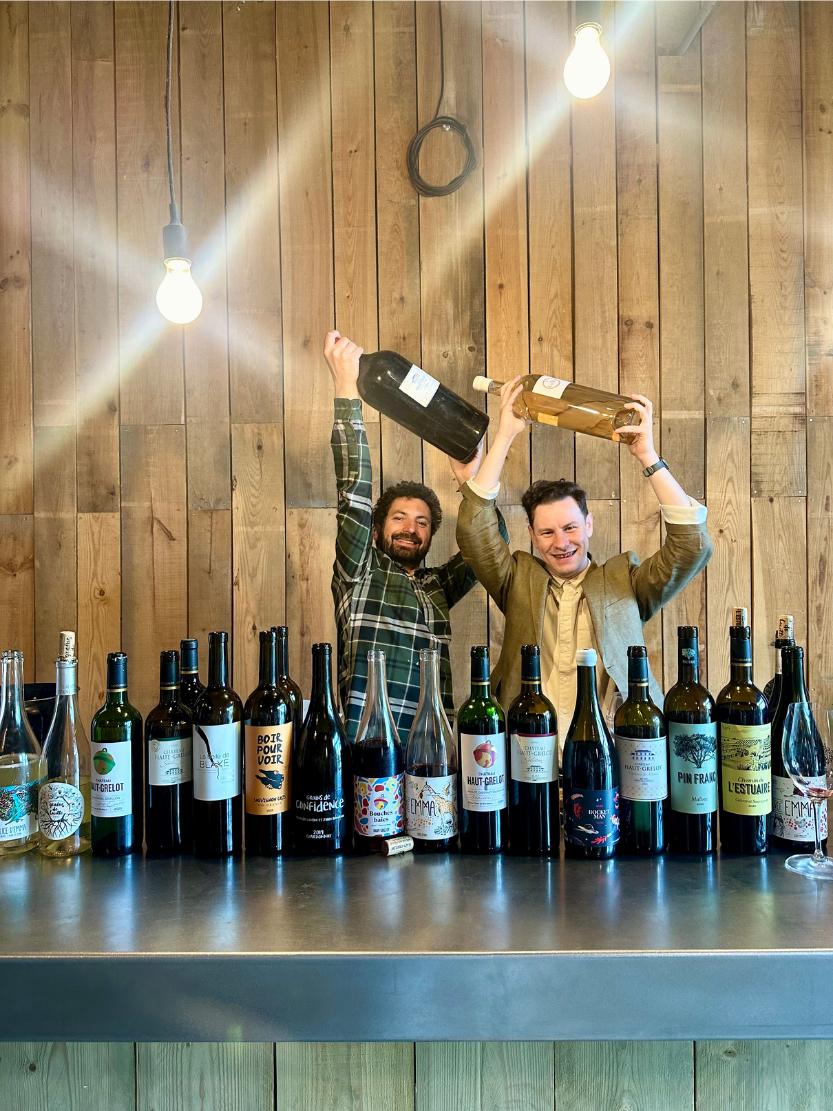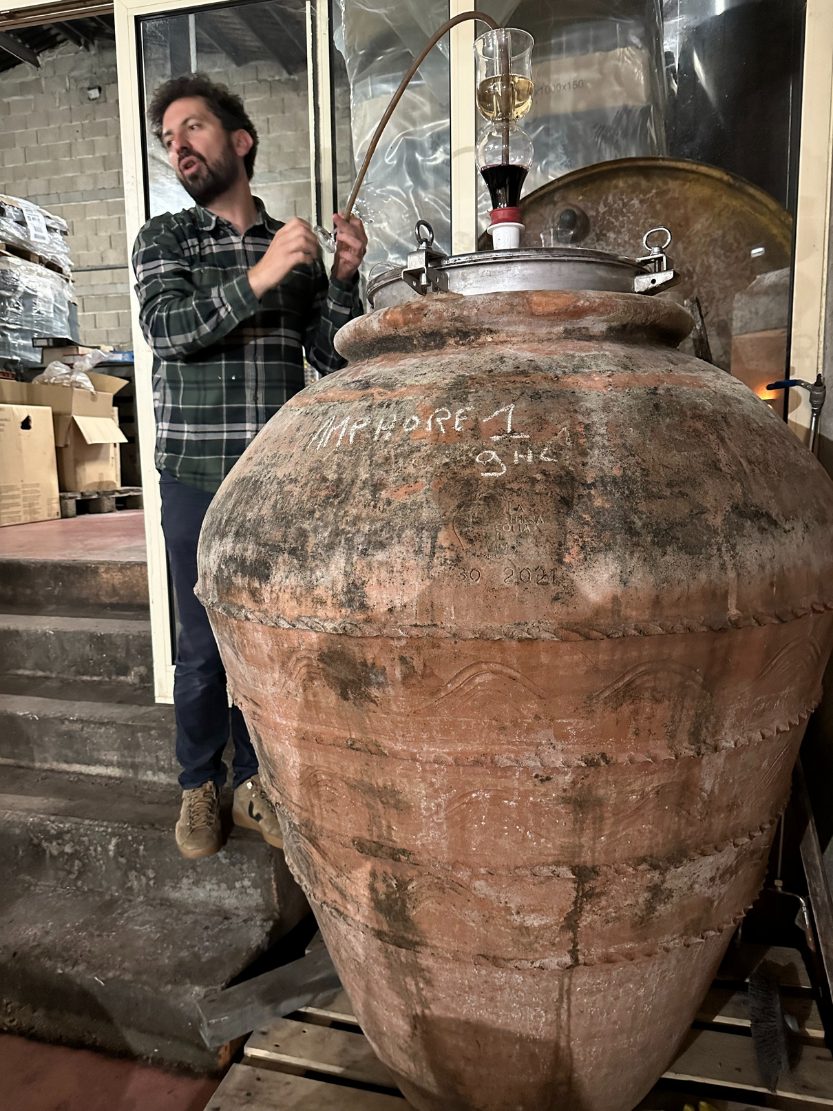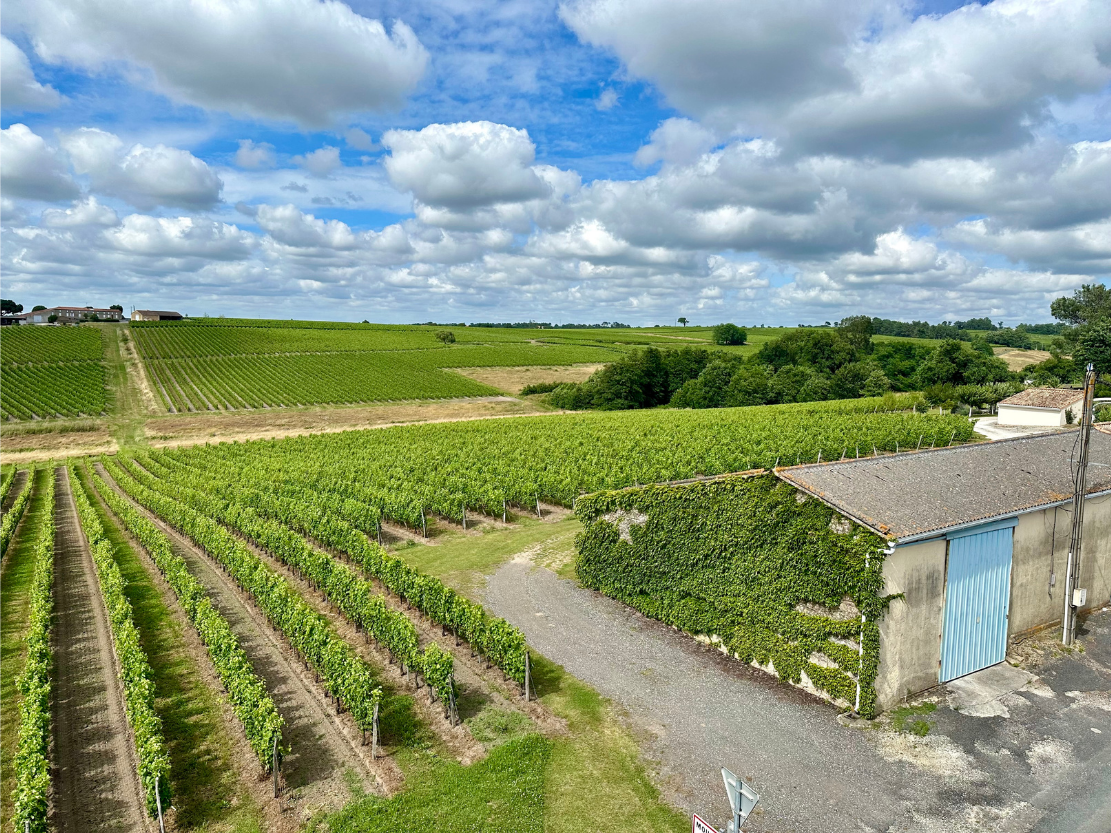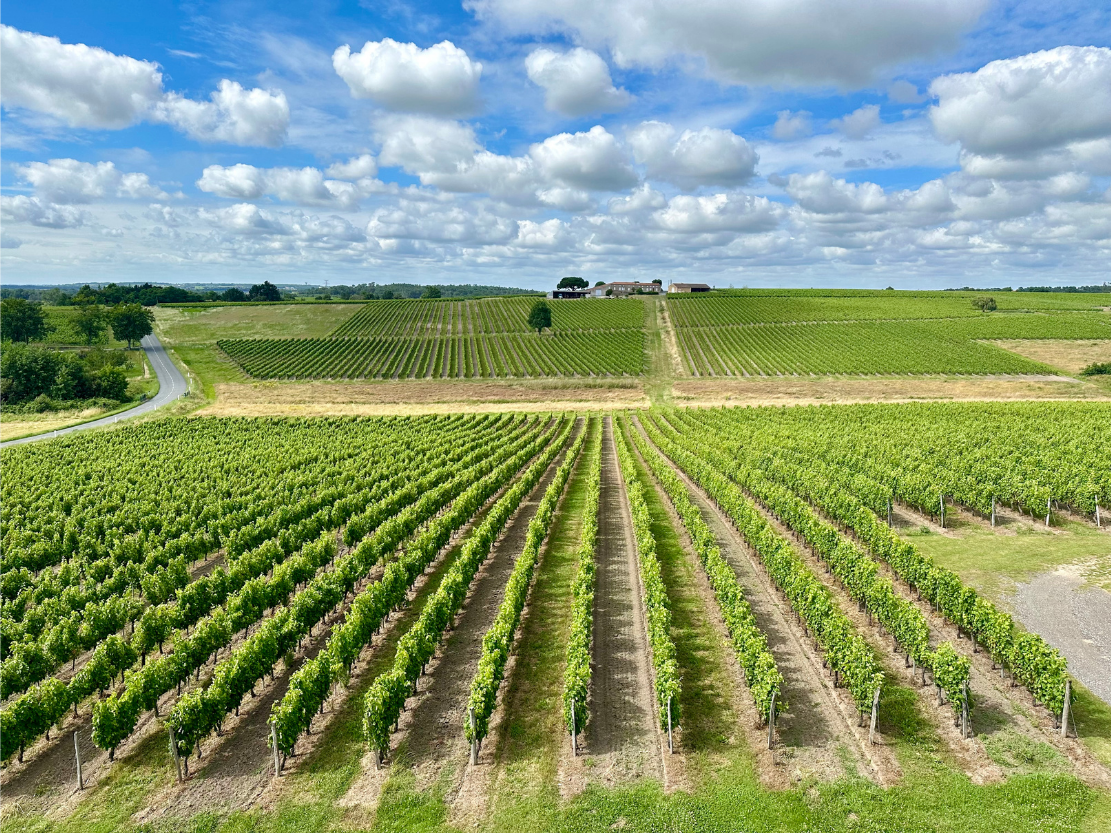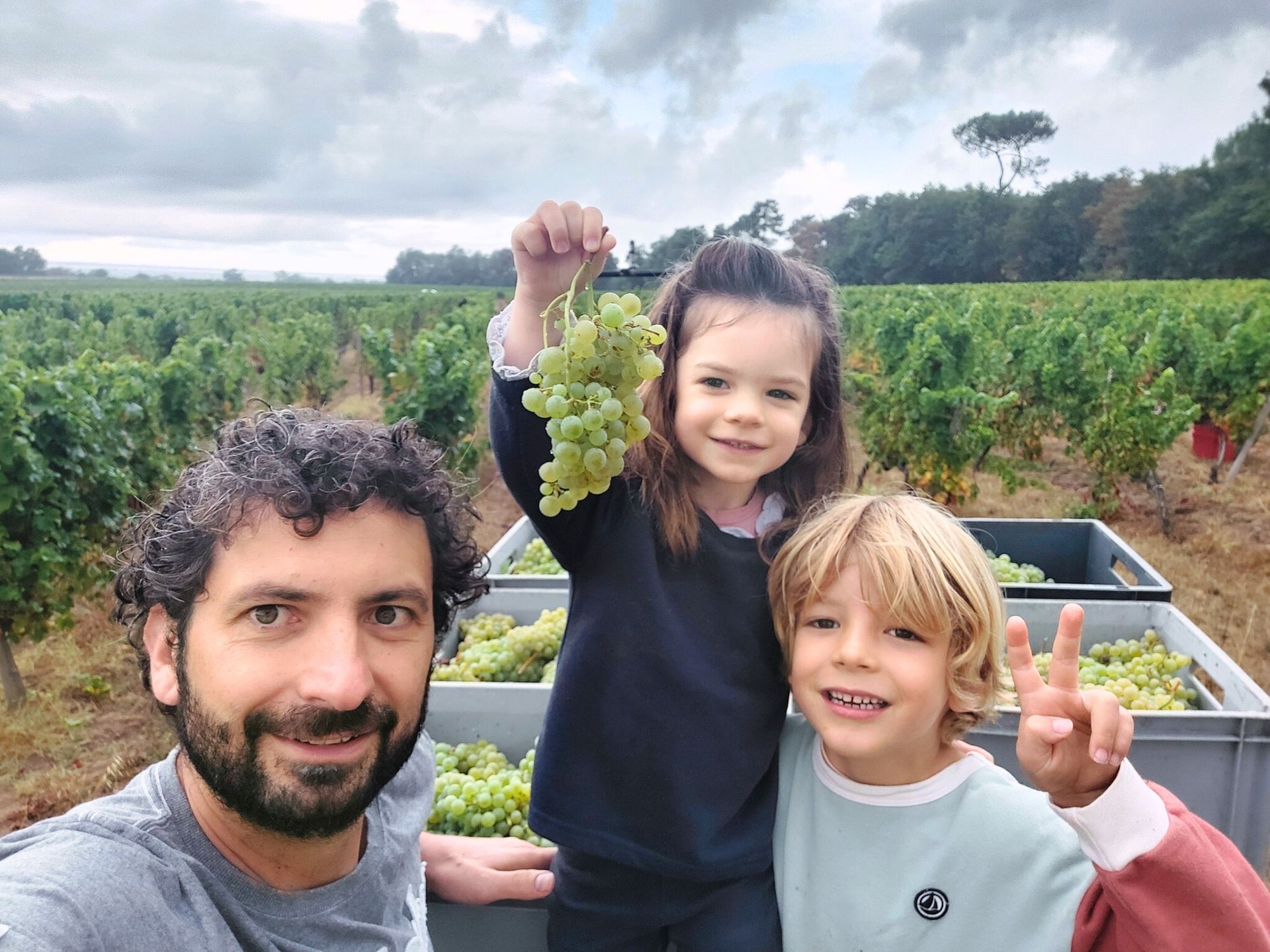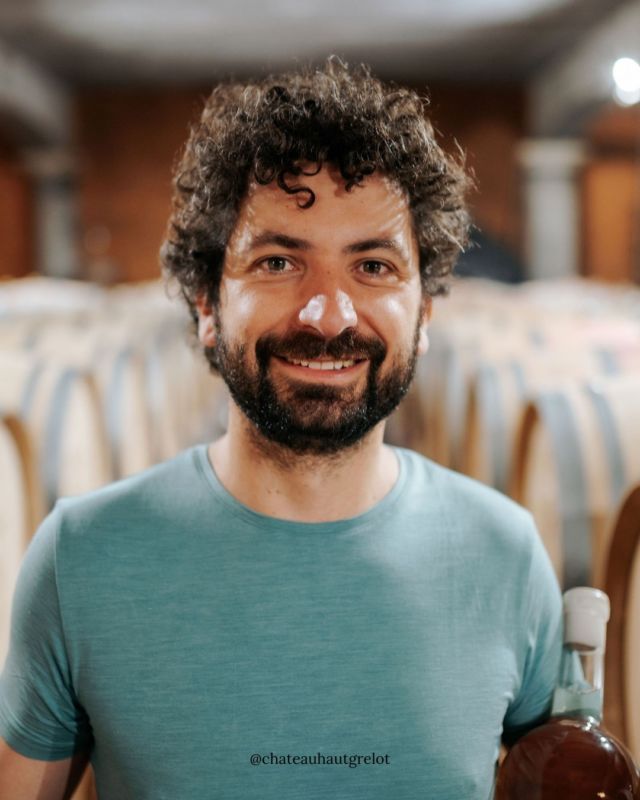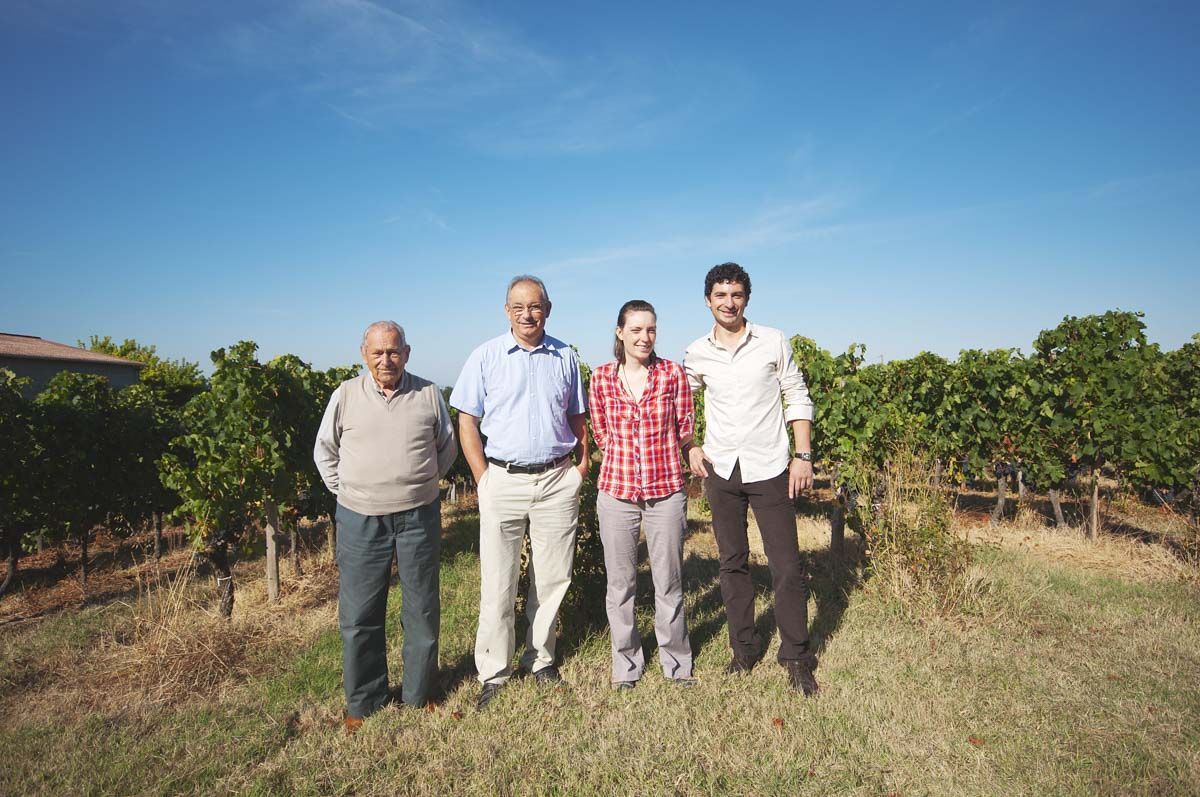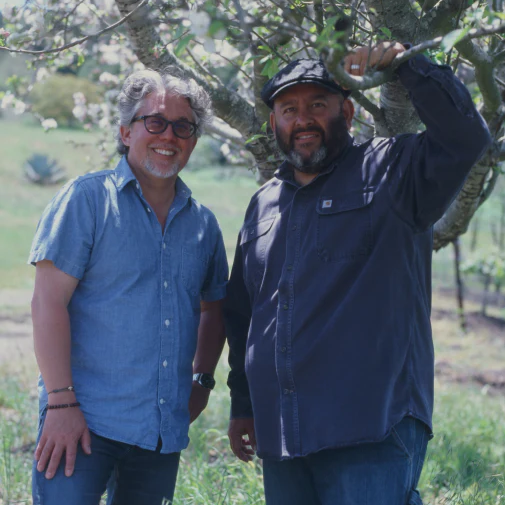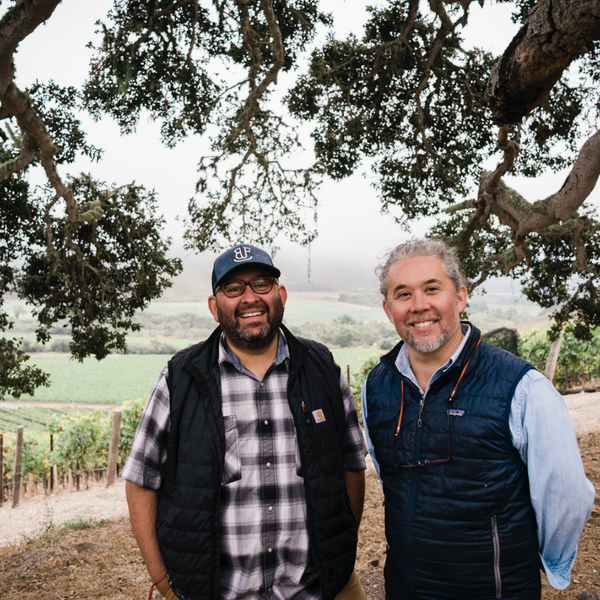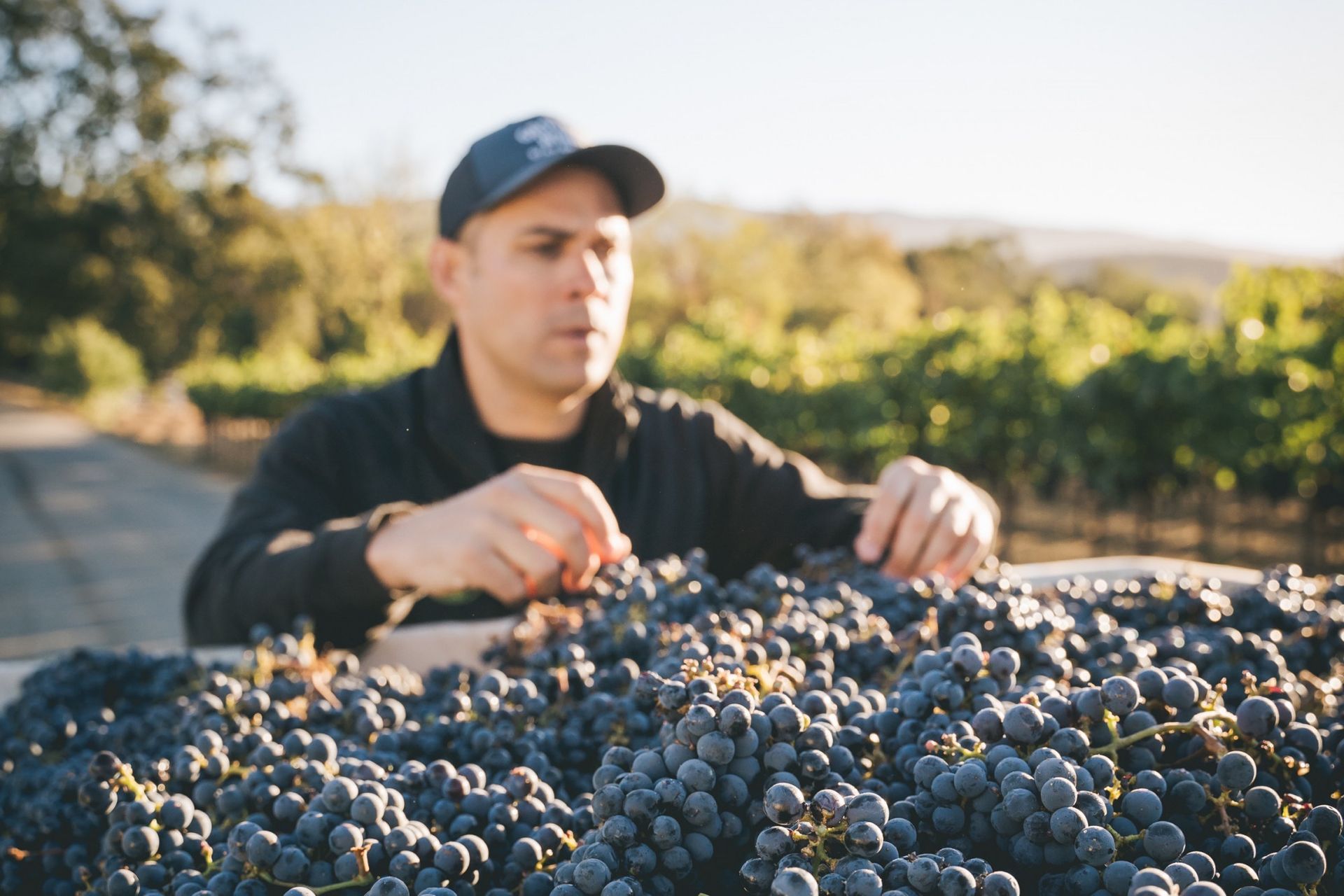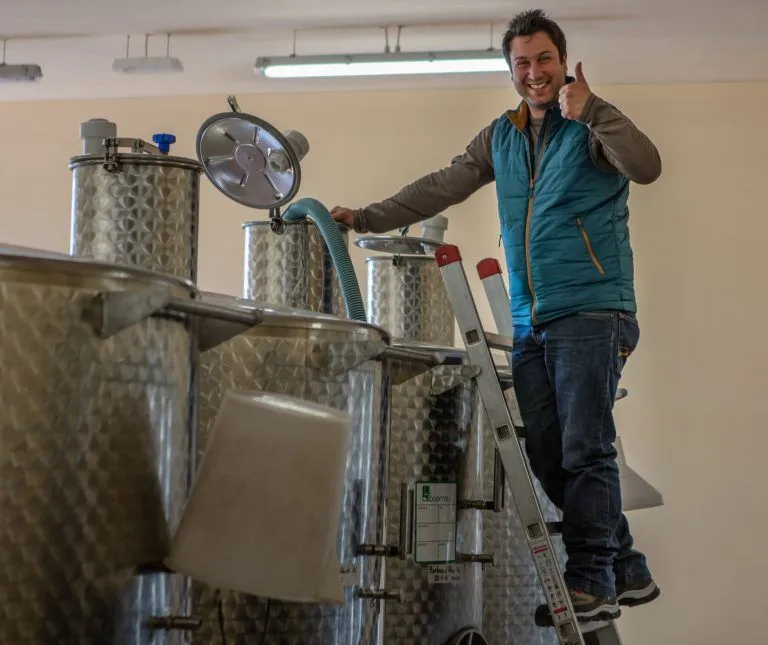Blaye AOP, Bordeaux, France
I met with this rambunctious young vigneron Julien Bonneau in his rather punk-rock, laissez-faire cellars deep in the Blaye. Locals poured in and out of the canteen-like cellar door (truly a cellar door) to pick up wine for the weekend and shoot the shit. The vibes were incredible. I felt silly in my linen suit coat bought for the purpose of not looking too casual in this most starched of wine regions ha ha. I was caught totally unawares by this bounding bon vivant and the impending onslaught of juice he had in wait. Drinking Cabernet from amphorae. Comparing it to the Cab in cement egg. Cracking magnums with pride. Thieving splashes from experimental barriques (a single barrel of oxidative rosé, anyone?), and then ‘ascending’ (read: white-knuckling-the-rail) to the top of their structurally-sus old watch tower from where they too, like our other Blaye darlings at Peybonhomme, can breathe in the Atlantic wind and survey the landscape. Julien took over from his parents with a frantic energy to reinvent how Bordeaux could be, so while his classic cuvées are delicious, of the dozens of wines he makes, I decided it best to bring the delicious single varietal series he’s created (at remarkable prices, may I add) that showcases all the elements of what is possible in Bordeaux with a new frame of mind.
Beginning with the Sauvignon Gris, the Boir Pour Voir, Drink to See is a perfect invitation as this is indeed an orange wine with the most gorgeous hue and from one of the finest varieties to be underrepresented in Bordeaux and often found only in its fringe appellations (like Blaye!). Sauvignon Gris is of course the pinkish-grey mutation and it gives not only colour to the wine, but its plusher nature is so well suited to this style. The nose is free of flaws with a juicy tropicality of cantaloupe, fresh herbs, orange marmalade, soursop, and most exciting of all: yellow pepper, a wonderful surprise obviously owing to Sauv Blanc’s famously nuclear payload of pyrazines. This is easily the most exciting orange wine I’ve had in years. It spent one month in a wooden vat after being foot tread. It was then pressed and racked half to classic Bordeaux French oak barriques and half to Amphora for a three month élevage. The fact this wine isn’t twice the price makes me inordinately happy but it also makes me feel like I’ve somehow stolen it from them ha ha. As always is our policy, we pass the savings on to you!
Moving on to the Bouches Baies (Berry Mouth for my fellow franco-challenged), this is fashioned after a classic Bordeaux Clairet (though not light enough in colour for AGLC to accept it as declared on the colour wheel haha, despite having the AOC) where the classic tannic structure of Bordeaux is avoided with a shorter maceration and a cooler ferment in stainless. These sandy soils were never the best for making extracted wines anyway. What they’re great for is big aromatics. So why not make it an aromatic chilled affair, and why not make it the most aromatic of all: 100% Cab Franc, babies! The wine is jjjjjuicyyyyy—but obviously not just juicy, it’s Cab Franc friendo!—it’s racing sans helmet with notes of tomato leaves and red currant and banana pepper. It answers the question: “oh you’re out of bloody mary’s? k.. what do you have for wine then?” I love it. Definitely one for the glou glou dolls.
Moving on to the Rocket Man Merlot (which translates to Rocket Man Merlot) — this cheeky drop is really just a trojan horse for a new generation of drinkers to finally wash the lost-symbolism of Sideways whole Merlot fiasco from their tender hearts and minds. It’s a notably ideal wine for the newly resurgent localvore Albertan considering its juicy profile of haskap and saskatoon with a hint of gamey edge and rooibos edge. It’s a natural wine with no added sulfites but with enough tannin and antioxidating anthocyanins to glass pour and have open over night without issue. Can be served cold or not, works both ways, but ideally you split the difference and serve this around 12-13º. The palate is soft and generous with just enough tannin to make it make sense at the dinner table.
Then comes a particularly exciting cuvée: the Pin Franc Malbec. Something they love to hammer into you in the French Wine Scholar program is that before the frost of 1956, there was a lotttttt of Malbec growing in Bordeaux. Especially in the Bourg and the Blaye! That frost killed many of those vines and Merlot seemed to escape with the least injury. It was then that Merlot went in its stead. Today there is a resurgence in Malbec planting with vignerons feeling better about its ripening curve in light of warmer temperatures and excitedly putting it back in the parcels where it once flourished. This 100% Malbec is a sign of the time. This is a very serious wine from a single vineyard on the Hill of the Agrière in a plot called Pin Franc. It is fermented in concrete, macerated with punch downs by hand, and spends well over a year in the same or in oak barrels slowly maturing, taking in air, softening. This is a delicious wine. The aroma is classically Malbec with chocolate and dark plum and blackberry (always with the fresh Blackberries in Blaye!) but none of that coffee thing you get in Malbec sometimes. The palate is super well integrated at this age, giving tobacco and plum skin and even some ripe apple like freshness. All this from twelve year old vines? The future is bright for this wine.
Lastly, we’ve brought Julien’s Chemin de l’Estuaire Cabernet Sauvignon — too boring a name to translate — but a boring wine it is not! This is certainly the only single-varietal Cab Sauv I encountered in my time in Bordeaux. Fermented in oak. Aged in oak (16 months). And five years old now from such a great vintage and showing oh so well. Oh, and picked well into October yet only 12.5%!—full phenolic maturity with structure like it’s the 70’s. Let’s goooo! This wine was concentrated and enervating and honestly, just very sexy {crrringe, I know}. The wine is like black plums and blackcurrants as if eaten from the tree moments before they fell to the ground on their own fully-ripened accord. Which is simply to say that I met this wine at the fulcrum between when the fruit was showing its most developed self before turning the corner from fresh fruit notes to dried/jammy/stewed fruit notes. This is a wine that will live its best life married to a properly generous French entrée, the kind of thing that keeps cardiologists in business. Tremendous value and a terroir wine all the same. With its intertwining scaffold of tannin and acid and fleet-footed 12.5% alcohol and uber-traditional 16 months in French oak, this wine tastes like it could only ever be from Bordeaux—but who’d have guessed the Blaye and not the Médoc!
I think you guys are really going to love these wines and they’ll be a treat to serve, custom built to pry open minds to give Bordeaux a new look.

